Mortgage applications in the last week rose 14.2% from the previous week as lower rates impact the economy even before the Fed starts their easing cycle.
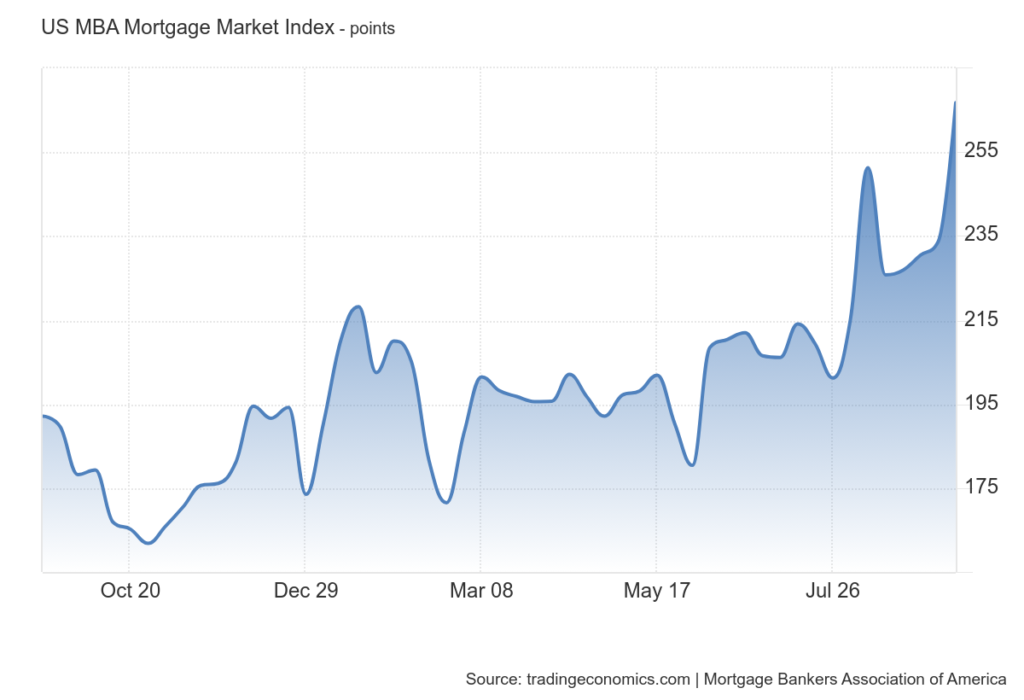
The new surge in applications is not, however, from purchase applications.
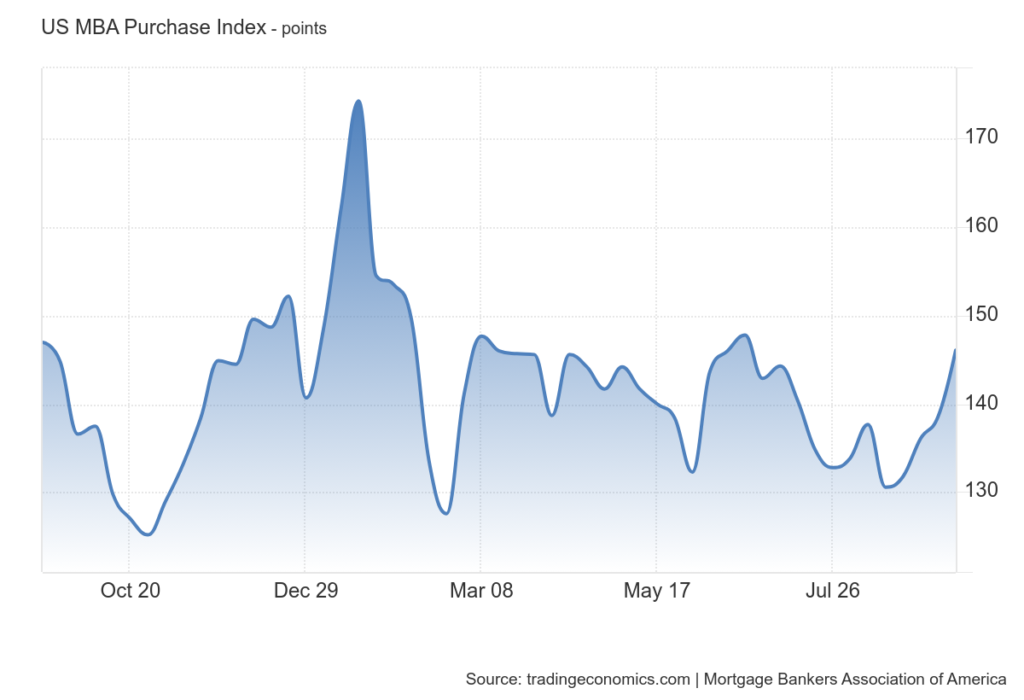
Most of the surge in applications is from refinancing.
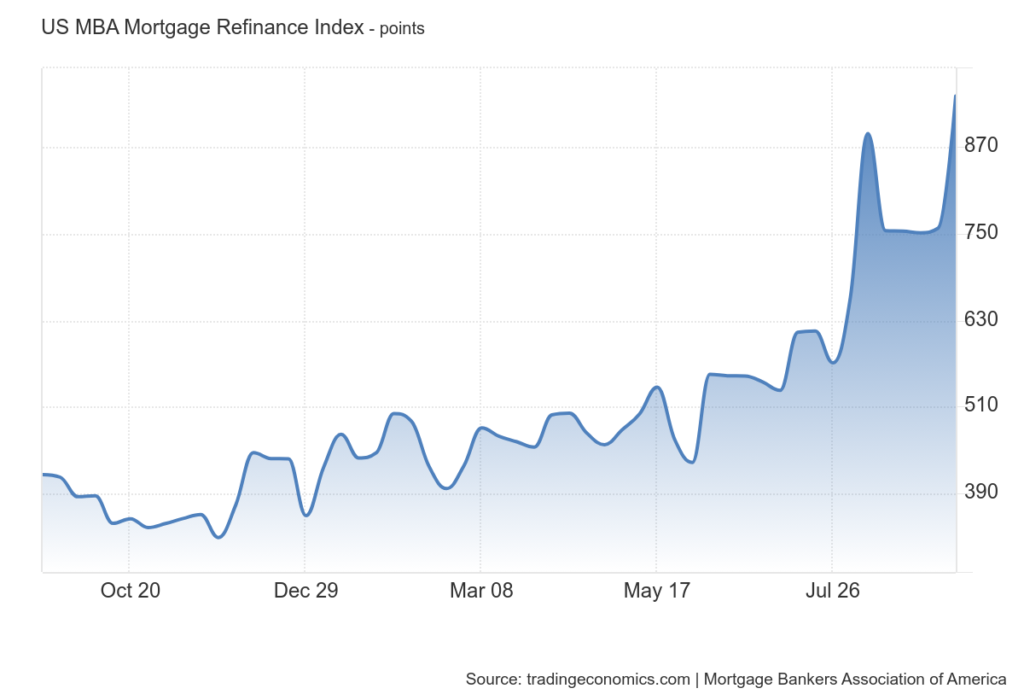
Housing starts also rose last month and are now just a little above the average since 1990.
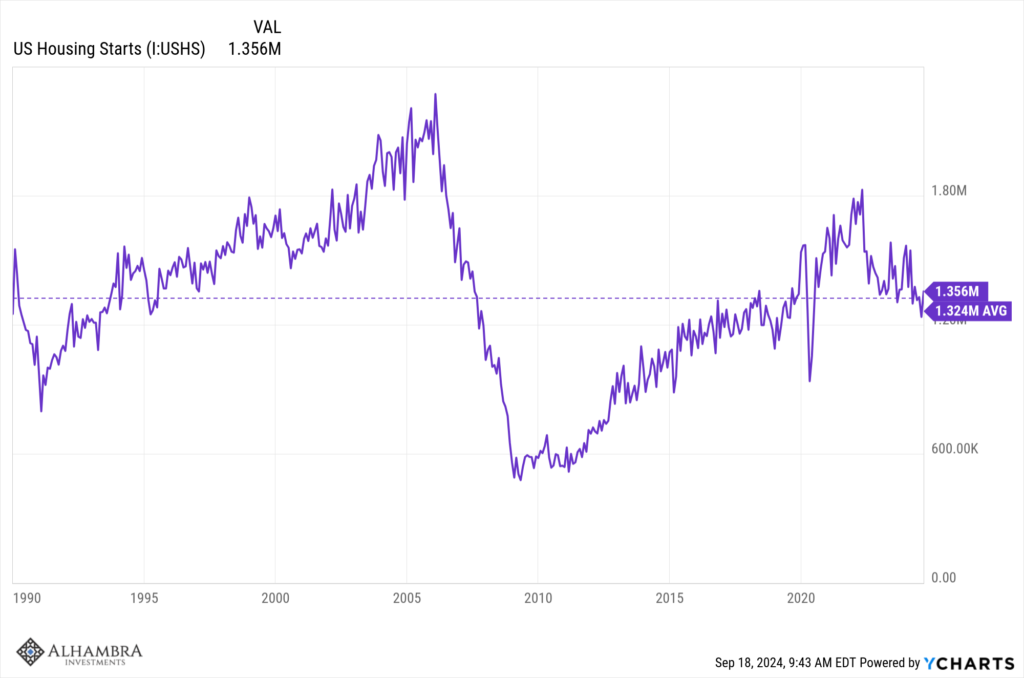
Building permits are also a tad above the long term average.
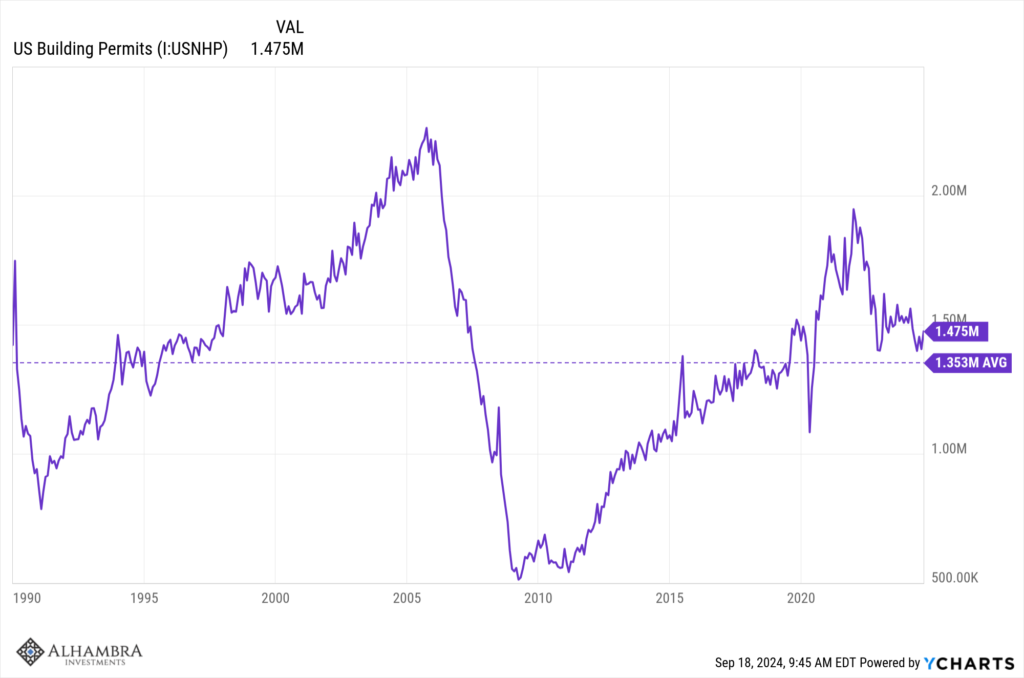
Residential investment is an input to GDP and has lagged since the Fed started hiking rates.
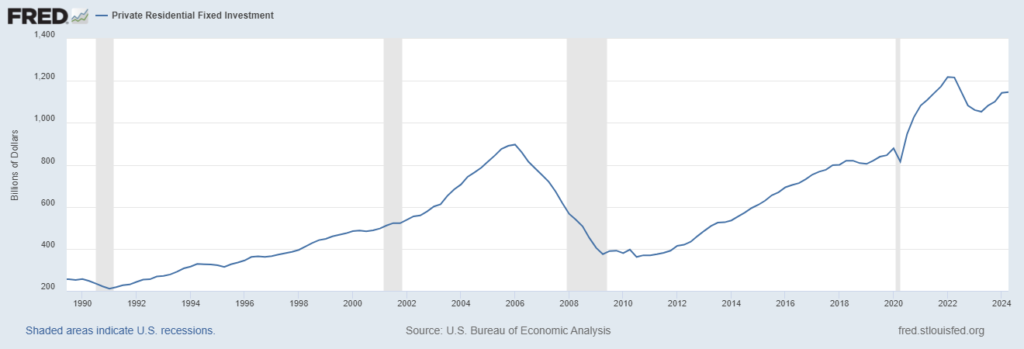
Mortgage rates are still elevated relative to the 10 year Treasury note yield but as the Fed starts to cut, the gap should close.
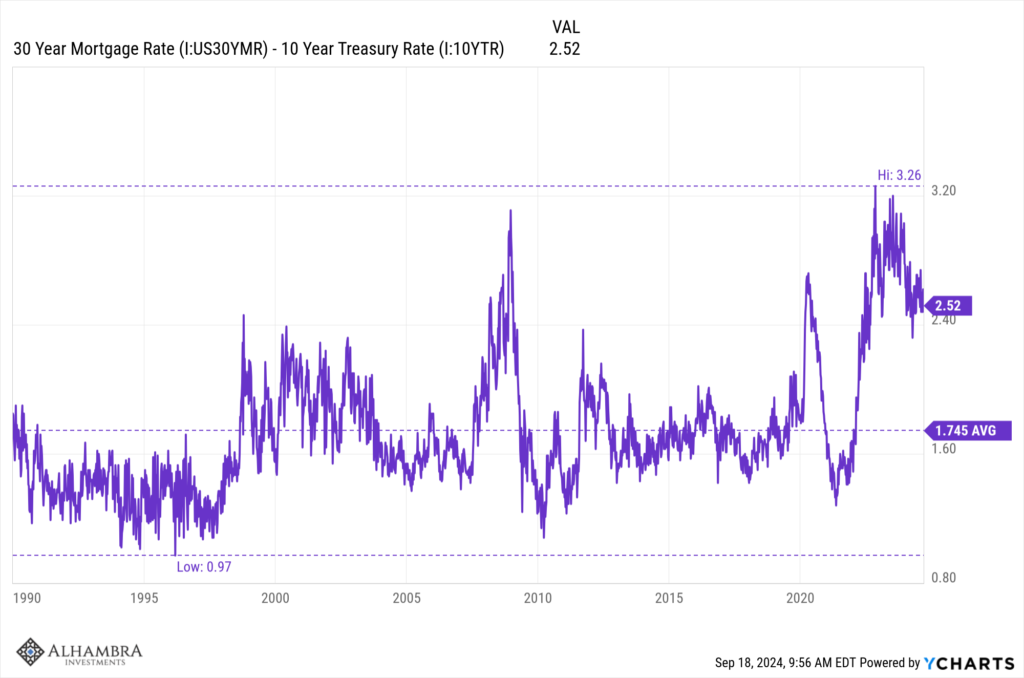
The increase in mortgage applications has come as the average 30 year mortgage rates has dropped from its peak of 7.79% in late October last year to 6.2% today. If those rates fall further, either because the spread narrows or because the Fed continues to cut rates, housing market activity seems likely to increase too and with it GDP.




